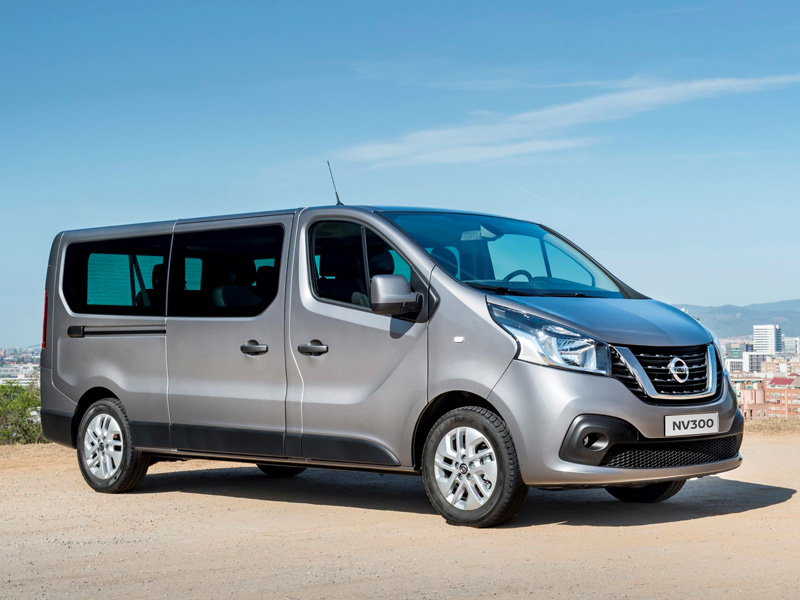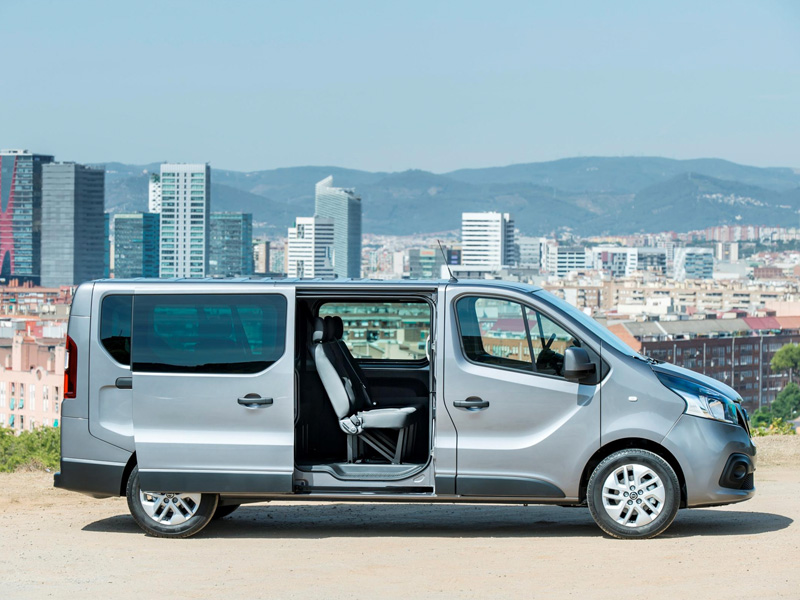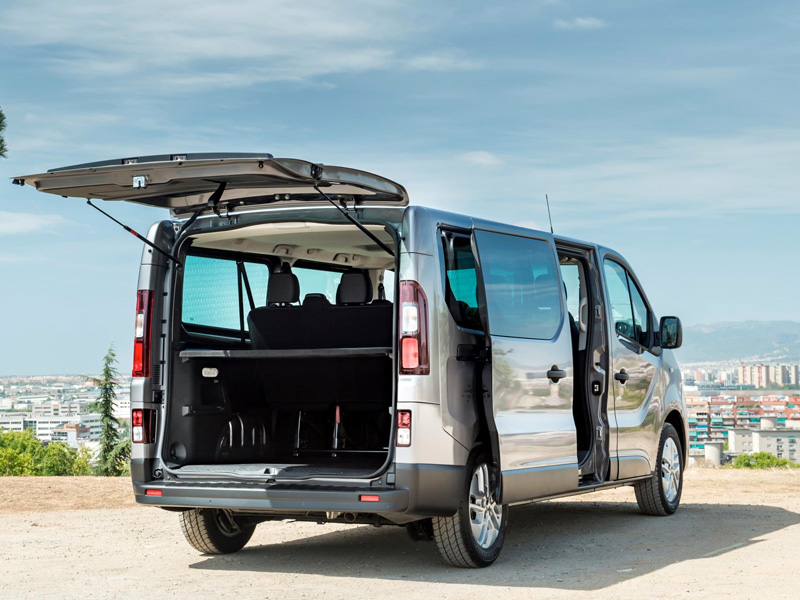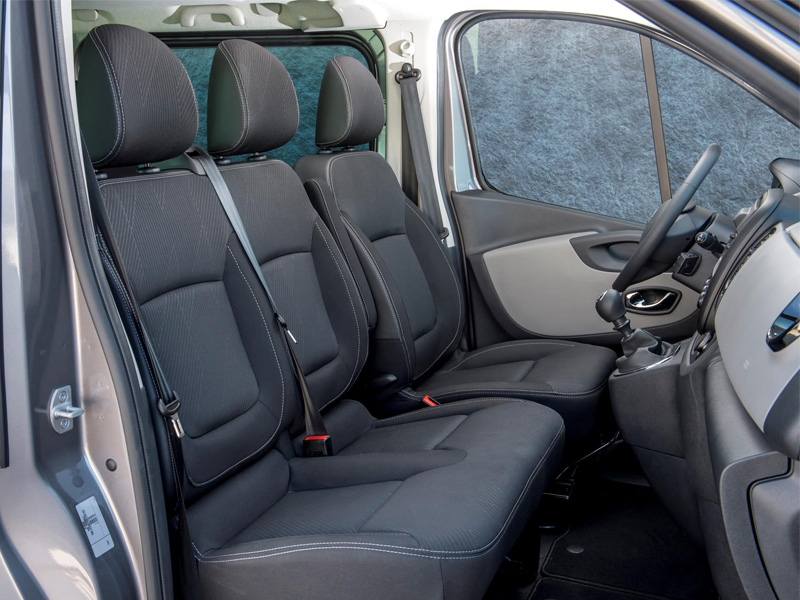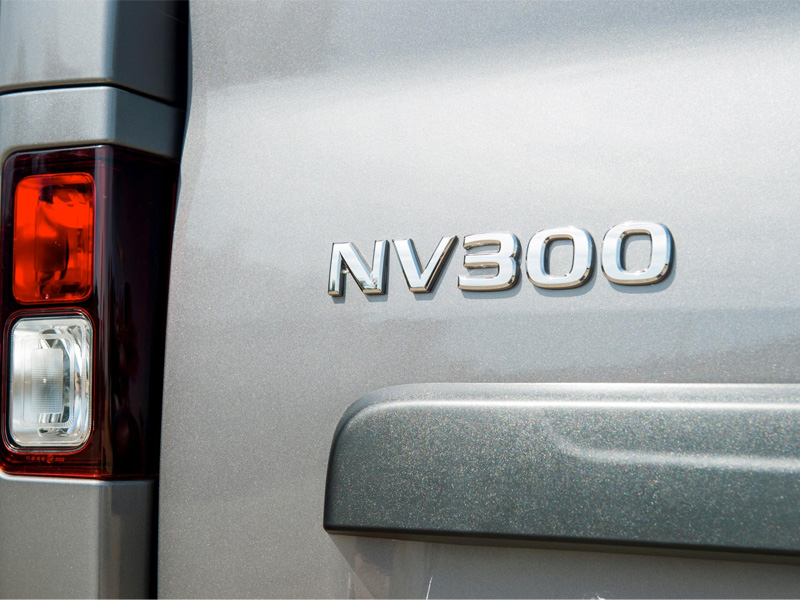Nissan’s NV300 van goes on sale in November and John Kendall looks behind the familiar face.
SECTOR Panel van PRICE TBA FUEL 5.6-6.5l/100km CO2 145 -170g/km
Announced in February and unveiled at the Hanover CV Show in September, the Nissan NV300 did not come as much of a surprise. Like its Primastar predecessor, it is based on the Renault Trafic, built in a joint venture with GM. NV300 is in fact the fourth variant of the van to be launched, following the Trafic, Opel/Vauxhall Vivaro and more recently the Fiat Talento. Like the Renault and Fiat variants, it will be built at the Renault plant at Sandouville in France.
There is a familiar model line-up, with the range running to short and long (L1 and L2) wheelbase models, both available with standard and high roof (H1 and H2). Then there are two six-seater crew vans based on L1H1 and L2H1 variants and a platform cab, based on the L2 platform. In addition there are two passenger-carrying models, the NV300 combi based on L1H1 and L2H1 variants giving seating for up to nine.
Vans can all carry up to three standard Europallets, including L1 models and Nissan reckons that 10 2.5m long plasterboard sheets will fit. Like its tin cousins, an optional hatch in the standard full steel bulkhead will accommodate long objects up to 3.75m long (L1) or 4.15m long in L2 models, while a second hatch under the passenger seat gives 80cm more available length. Load volume spans 5.2m3 to 8.6m3. With gross weight options of 2,700kg and 2,900kg, payload for the range covers 1,073kg to 1,310kg, less for the crew vans.
Power comes from the Renault-Nissan Alliance 1.6-litre common-rail injection diesel engine with power outputs of 95hp, 120hp, 125hp and 145hp, the 125hp and 145hp engines featuring twin turbocharging.
Service intervals of two years/40,000km and a five-year/160,000km warranty look like good news for operators, keeping the NV300 on the road for as much time as possible while the warranty will be particularly useful for low mileage users.
Like the larger NV400, Nissan has managed to distinguish the model from its joint venture cousins with a bold front grille design. At the launch, Nissan provided 125hp and 145hp variants to drive in both van and combi variants. Not surprisingly, they were similar to the other variants of the van that we have driven before, providing a well thought out cab with plentiful storage space, including an optional space under the passenger seat.
The driving position benefits from a reach and rake adjustable steering wheel and more seat adjustment than earlier versions, so it is a comfortable place to spend a working day.
The twin-turbo engines deliver plenty of pulling power. Our L1H1 125hp van came with a light load, which did little to dent the performance. Refinement is notable too, with little engine noise penetrating the cabin and gearing designed to keep engine revs down at motorway speeds.
Nissan does not intend to rival the sales aspirations of either Renault or Vauxhall, with little more than a thousand sales in a full year and will use its business centre network to handle NV300 sales.
What we think
The NV300 is a good addition to the Nissan LCV range, plugging the gap between the NV200 and larger NV400, left by the demise of the Primastar. Worth considering.


